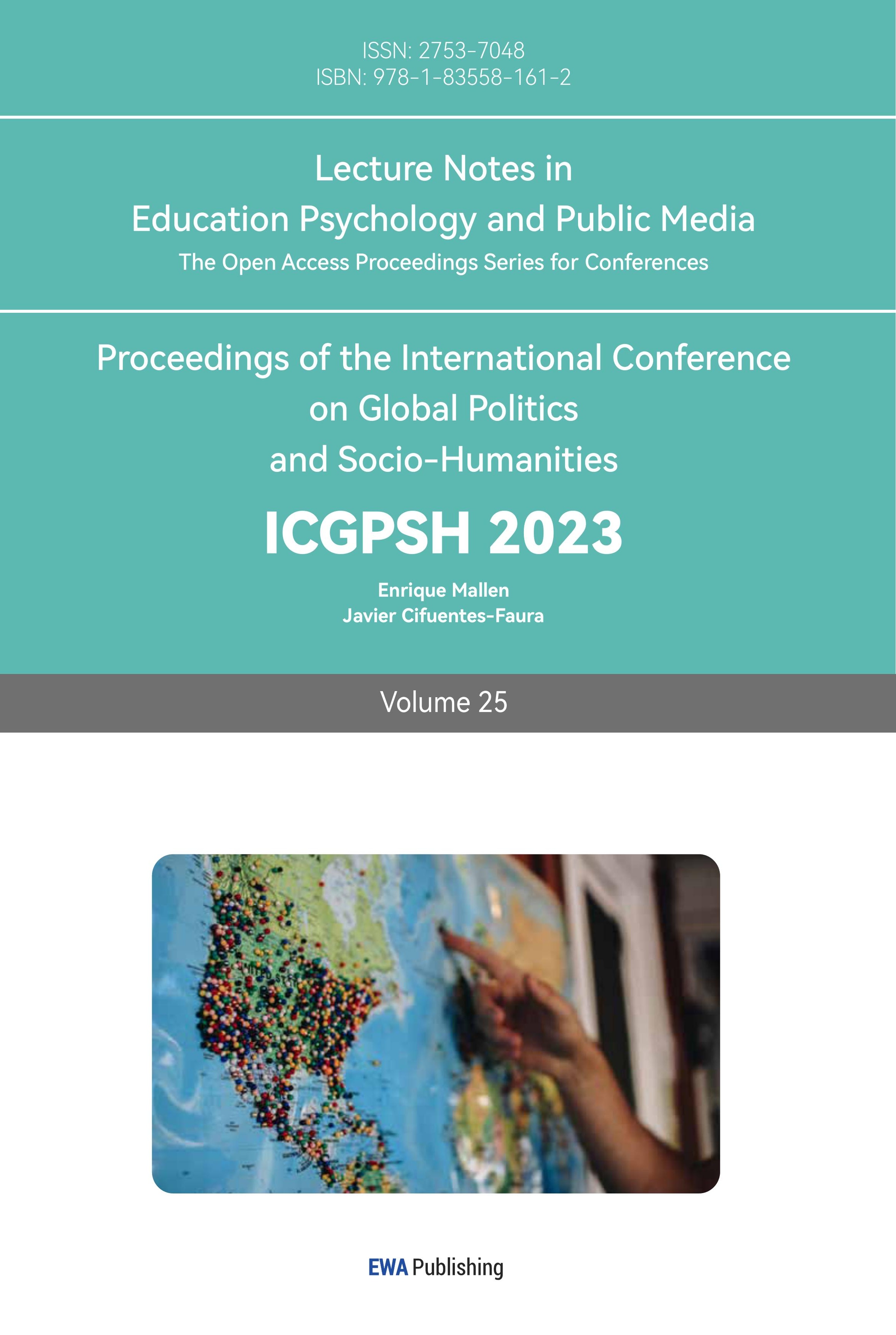References
[1]. Gao Fei. (2003) Current Situation, Problems and Exploration of Research on the Evolution of Sino-Soviet Relations in the 1950s and 1960s. International Forum. Vol.5 No.6, p40.
[2]. Liuji. (2008) From Alliance and Mutual Assistance to Divided Sino-Soviet Relations, XiangTan University.
[3]. P. Eugene. (1994) Far Eastern Problems, vol5, p. 106.
[4]. P. Eugene. (2007) The Causes of the 1950-1960 Sino-Soviet Split: A Comparative Study of the Chinese and Russian Perspectives. Jilin University.
[5]. Jiao Hong. (2019) Sino-Soviet Relations during the War of Resistance against the United States and North Korea. Heilongjiang University.
[6]. People’s Daily. (1958.11.8) https://history.sohu.com/a/499697986_482071
[7]. Wu Lengxi. (1999) Ten Years of War: Memoirs of Sino-Soviet Relations 1959-1966 (first volume). Central Literature Publishing House.
[8]. Li Danhui. Mao Zedong’s Understanding of the Soviet Union and the Evolution of Sino-Soviet Relations in Beijing and Moscow: From Alliance to Confrontation, p. 323. Guangxi Normal University publishers.
[9]. Shen Zhihua, Li Danhui, A Study of Several Issues in Postwar Sino-Soviet Relations, p. 260, People’s Publishing House.
[10]. People’s Daily (1959.4.22) from: Eugene. (2007) The Causes of the 1950-1960 Sino-Soviet Split: A Comparative Study of the Chinese and Russian Perspectives. Jilin University.
[11]. Ku Mann. (2007) Soft Power and Sino-Soviet Relations in the 1950s. Changbai Journal, p135.
Cite this article
Fu,T. (2023). Sino-Soviet Relations in the Early 1950s - Late 1960s. Lecture Notes in Education Psychology and Public Media,25,155-159.
Data availability
The datasets used and/or analyzed during the current study will be available from the authors upon reasonable request.
Disclaimer/Publisher's Note
The statements, opinions and data contained in all publications are solely those of the individual author(s) and contributor(s) and not of EWA Publishing and/or the editor(s). EWA Publishing and/or the editor(s) disclaim responsibility for any injury to people or property resulting from any ideas, methods, instructions or products referred to in the content.
About volume
Volume title: Proceedings of the International Conference on Global Politics and Socio-Humanities
© 2024 by the author(s). Licensee EWA Publishing, Oxford, UK. This article is an open access article distributed under the terms and
conditions of the Creative Commons Attribution (CC BY) license. Authors who
publish this series agree to the following terms:
1. Authors retain copyright and grant the series right of first publication with the work simultaneously licensed under a Creative Commons
Attribution License that allows others to share the work with an acknowledgment of the work's authorship and initial publication in this
series.
2. Authors are able to enter into separate, additional contractual arrangements for the non-exclusive distribution of the series's published
version of the work (e.g., post it to an institutional repository or publish it in a book), with an acknowledgment of its initial
publication in this series.
3. Authors are permitted and encouraged to post their work online (e.g., in institutional repositories or on their website) prior to and
during the submission process, as it can lead to productive exchanges, as well as earlier and greater citation of published work (See
Open access policy for details).
References
[1]. Gao Fei. (2003) Current Situation, Problems and Exploration of Research on the Evolution of Sino-Soviet Relations in the 1950s and 1960s. International Forum. Vol.5 No.6, p40.
[2]. Liuji. (2008) From Alliance and Mutual Assistance to Divided Sino-Soviet Relations, XiangTan University.
[3]. P. Eugene. (1994) Far Eastern Problems, vol5, p. 106.
[4]. P. Eugene. (2007) The Causes of the 1950-1960 Sino-Soviet Split: A Comparative Study of the Chinese and Russian Perspectives. Jilin University.
[5]. Jiao Hong. (2019) Sino-Soviet Relations during the War of Resistance against the United States and North Korea. Heilongjiang University.
[6]. People’s Daily. (1958.11.8) https://history.sohu.com/a/499697986_482071
[7]. Wu Lengxi. (1999) Ten Years of War: Memoirs of Sino-Soviet Relations 1959-1966 (first volume). Central Literature Publishing House.
[8]. Li Danhui. Mao Zedong’s Understanding of the Soviet Union and the Evolution of Sino-Soviet Relations in Beijing and Moscow: From Alliance to Confrontation, p. 323. Guangxi Normal University publishers.
[9]. Shen Zhihua, Li Danhui, A Study of Several Issues in Postwar Sino-Soviet Relations, p. 260, People’s Publishing House.
[10]. People’s Daily (1959.4.22) from: Eugene. (2007) The Causes of the 1950-1960 Sino-Soviet Split: A Comparative Study of the Chinese and Russian Perspectives. Jilin University.
[11]. Ku Mann. (2007) Soft Power and Sino-Soviet Relations in the 1950s. Changbai Journal, p135.









